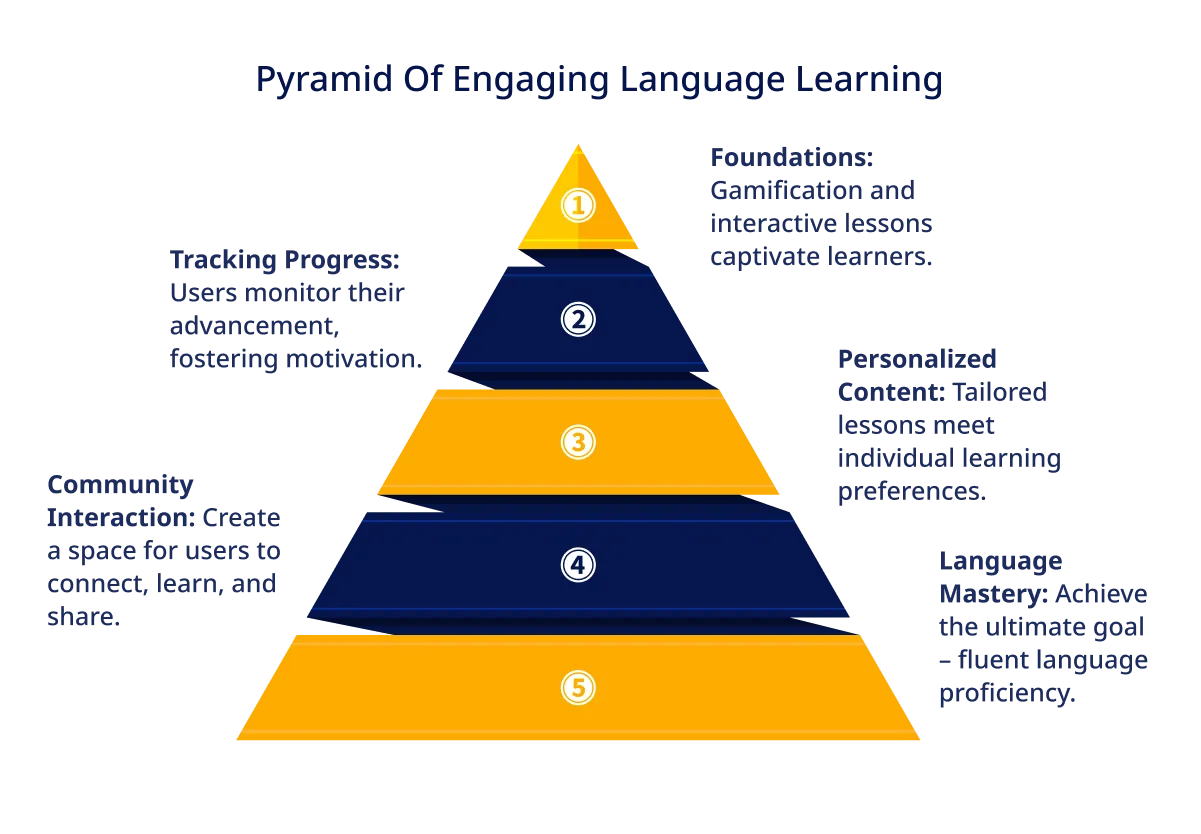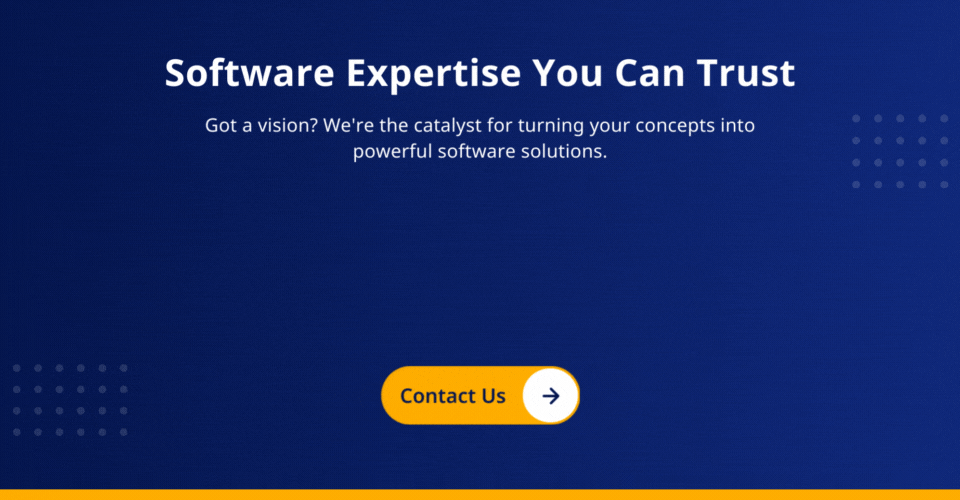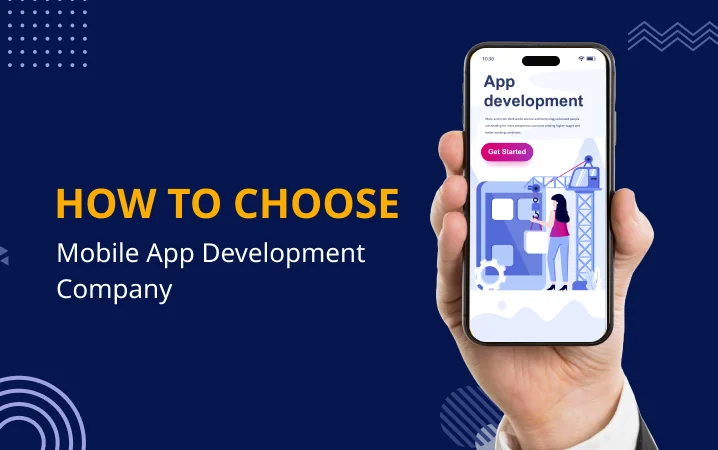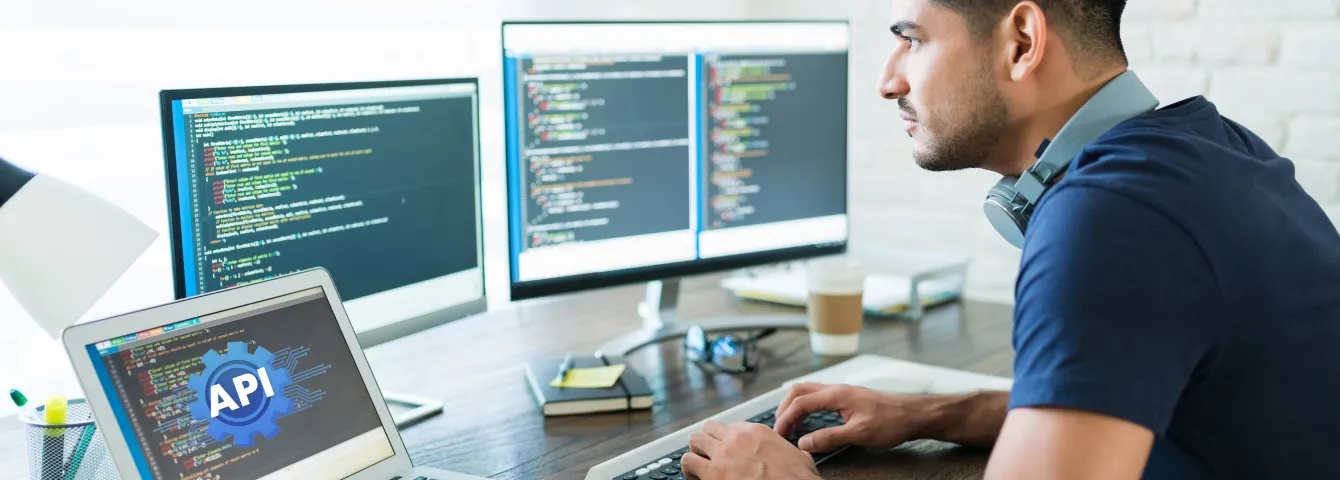Do you dream of creating the next big thing in language learning apps like Duolingo did? Well, it’s not impossible!
With the right strategies and clear goals, you can achieve this and create one of the best eLearning solutions applications.
According to the latest Marketwatch post, the Global Language Learning Market size is predicted to reach multimillion USD by 2029, in contrast to 2022, at unexpected CAGR during the forecast Period 2023-2029.
Investing in learning solutions can help businesses scale and meet their audience’s expectations.
All you need is proper guidance on building a language-learning app; we’ve got you covered for that.
This blog post discusses how to build a language-learning app like Duolingo, the technology used, the estimated cost, and more. If you are planning to create something similar yet better, read on.
Key Points to Consider to Develop an App like Duolingo
Do you want to create a great application like Duolingo, but are not sure where to start? There is a possibility that you might be missing out on something. Here, we have listed some crucial points that will ensure the success of your application and help you achieve your business objectives.
#1. Market & Audience is the Foremost!
In the ever-evolving landscape of language learning apps, it’s crucial to understand the nuances of the market and comprehend the different types of audiences that these apps cater to.
If you want to know how to build a language-learning app that leads to success, start by understanding your target audience and the market.
As you kick off your journey to develop a language-learning app akin to Duolingo, this foundational step will set the stage for your app’s success.
There is always an option of hiring an app development company; however, if you have an in-house team, then they can help you understand the market demands & audience expectations.
#2. Defining Your Unique Value Proposition
In the landscape of language learning apps, setting your creation apart requires a secret ingredient: Unique Value Proposition (UVP).
Your UVP isn’t just a fancy term – it’s what makes your app special and enticing.
This is the reason many businesses hire companies offering Enterprise software development services that guide brands to the right paths by understanding their goals.
Consider it as the heart of your app’s identity. It’s a clear statement that explains why your app is worth a learner’s time and commitment.
Are you offering interactive conversational practice with native speakers?
Do you provide quick lessons for busy professionals?
Your UVP clarifies what your app uniquely offers. One of the key points to understanding how to build a language learning app is understanding UVP.
A well-defined UVP helps users grasp the value they’ll gain from your app. In a market inundated with choices, your UVP guides learners to what they seek. It’s a promise that resonates with their needs.
So, as you begin on your language learning app journey, take the time to define your UVP thoughtfully.
Our experts are here to help!
#3. Choosing Languages and Curriculum
When creating a language learning app, one of the first crossroads you encounter is deciding which languages to feature and how to structure the curriculum.
Start by evaluating popular and widely spoken languages. These are often a safe bet, catering to a broader user base.
However, don’t overlook the charm of lesser-known languages; they can attract niche learners hungry for unique offerings.
Consider your target audience. Are they travelers seeking basic communication skills, professionals aiming for business fluency, or enthusiasts delving deep into linguistics?
Tailor your curriculum to their aspirations. For beginners, focus on essential phrases and vocabulary. For advanced learners, provide intricate grammar and cultural nuances.
Integration of culture is vital. Language is intertwined with customs and traditions. Your curriculum should reflect this by incorporating idiomatic expressions, local insights, and interactive scenarios that mirror real-life situations.
Interactive elements are gold. Engage learners with quizzes, dialogues, and interactive exercises. This cultivates an immersive experience, enhancing retention and practical application.
Consult with the companies offering eLearning solutions to have expertise on this. Remember, flexibility is key. Allow users to switch between languages and adjust their learning pace.
Also read: Popular E-Learning App Development Trends Impacting Educational Sector
#4. Gamification and User Engagement
Gamification isn’t about turning your app into a video game; it’s about infusing elements that keep learners motivated and engaged.
Consider this: earning points for completing lessons, unlocking new levels as proficiency grows, or even competing with friends. These mechanics create a sense of accomplishment, making the learning journey more enjoyable.
But gamification is more than just badges and scores. It taps into our innate desire for progress and rewards.
As learners conquer challenges, they feel a surge of satisfaction, spurring them to return for more. It’s like turning language learning into a series of mini-victories.
Interaction is key. Incorporate interactive quizzes, timed challenges, and group activities that encourage healthy competition.
If you need expertise, hire mobile app development services experts to successfully implement these interactive elements with your app.
Social features allow users to connect, share achievements, and learn from each other.
Remember, gamification shouldn’t overshadow learning. It’s a supportive layer that enhances the core content.
Strike a balance between fun and education – a delightful blend that entices users to keep coming back.
Create a flawless application with our experts!
#5. Technology Stack and Development Process
This stage is the backbone of the language application hence if you are exploring or learning how to build a language learning app, pay extra attention to this stage.
Your technology stack is like a developer’s toolkit. It includes programming languages, frameworks, and tools that shape your app’s functionality and design.
Choosing the right stack is crucial. Consider a robust framework for user interfaces, a scalable backend language for data management, and a reliable database to store progress.
The development stage is an infusion of creativity and structure. Begin designing wireframes and prototypes, creating a blueprint of your app’s layout. Then, the coding begins.
Developers bring your design to life, writing the code that links interactive elements, databases, and user profiles.
Iterative development is the rhythm of progress. It involves continuous testing and refining.
As features take shape, catching bugs and usability issues early is important, ensuring a smooth user experience
Keep in mind cross-platform compatibility is essential. Your app should seamlessly function on various devices & operating systems, making it accessible to a bigger audience.
Having cross-platform app development services is always a good decision to avoid mistakes.
A team of frontend and backend developers, UI/UX designers, and quality assurance testers work in harmony, each contributing their expertise to create a polished app.
In a nutshell, your app’s technology stack and development process is like constructing a multi-dimensional puzzle. Every piece should fit snugly, from the user’s first click to their final lesson.
#6. Content Creation and Management
Content creation is an art that blends language expertise with user engagement. Linguists and educators curate lessons, infusing them with cultural context and real-world relevance.
These lessons evolve from simple words to complete dialogues, gradually building learners’ language comprehension.
Remember, diversity is key! Mix interactive exercises, audio clips, and visual aids to cater to different learning styles. Each lesson should be a journey, capturing attention and fostering retention.
Content management ensures a steady supply of fresh material. A content management system (CMS) helps you organize and update lessons efficiently.
It enables quick adjustments, responding to user feedback and linguistic trends.
Organize lessons logically, moving from basic vocabulary to complex sentence structures. Consistency and clarity are paramount – learners should feel their progress with each click.
Quality control is the final touch. Rigorous proofreading and editing maintain the accuracy and fluency of the content. This ensures learners are cultivating the correct language skills, free from errors.
By understanding this process, you’re not just building an app – you’re cultivating a rich learning ecosystem that users will cultivate and cherish.
#7. User Progress Tracking and Analytics
Those trying to decode how to build a language learning app must know that user progress tracking is the GPS of your app. It monitors learners’ achievements, tracking completed lessons, quizzes, and challenges.
This process isn’t merely collecting data; it’s about offering learners a snapshot of their achievements. This visual feedback fuels motivation and celebrates every milestone.
Analytics, on the other hand, is one of the best ways to get into the insights. It examines user behavior, patterns, and engagement levels. These insights reveal what’s working and what might need adjustment.
Do users engage more with gamified quizzes? Are there specific lessons that spark more interest? Analytics provide answers that shape your app’s evolution.
Last but not least, personalization is the most important ingredient of your learning application. Use progress tracking and analytics to customize learning journeys.
Suggest lessons based on learners’ strengths and areas that need improvement. This makes the learning experience a personal expedition tailored to each user’s needs.
#8. Monetization Strategies
Monetizing your language learning app isn’t just about revenue – it’s about ensuring your app’s continued growth and excellence. Here are some strategic anchors to consider:
- Freemium Model: Offer your app a basic version for free. Provide premium features or content for a subscription fee. This encourages users to invest for enhanced value.
- Subscription Plans: Offer tiered basic, premium, and advanced subscription plans. Each tier grants access to more lessons, features, and perks. Subscriptions ensure steady revenue and a committed user base.
- In-App Purchases: Users can purchase additional content, like specialized vocabulary packs or advanced lessons. This appeals to learners seeking specific language niches or challenges.
- Advertisements: Another useful monetization strategy you can apply is incorporating non-intrusive ads that align with your audience. Balance ad presence with user experience to maintain engagement.
- Free Trial Period: Offer a limited-time free trial of premium features. This gives users added benefits, potentially convincing them to subscribe. Hire app developers who can help you implement this strategy successfully without any pitfalls.
- One-Time Purchase: Users can unlock the full app with a single payment. This appeals to learners who prefer a onetime investment. So you can offer that too in your application.
All in all, monetization isn’t a one-size-fits-all approach. It’s about understanding your audience’s preferences and crafting a strategy harmonizing with your app’s mission.
Balancing revenue with user satisfaction is the compass that will guide you toward building a sustainable and impactful language learning experience.
Also read:How To Build Customizable And User-Friendly E-Learning Software Share
#9. Quality Assurance and User Feedback
Creating a top-notch language learning app requires more than just lines of code; it demands a commitment to quality and a willingness to hear your users.
So, if you are new to app development and learning how to build a language-learning app, here’s how to weave these threads into your app’s fabric:
- Quality Assurance: Conduct comprehensive testing at every development stage to catch bugs and glitches early. Ensure the app’s interface is intuitive and user-friendly. Keep the app running smoothly, regardless of the device or operating system.
- User Feedback: Create easy ways for users to provide feedback, such as in-app surveys or direct contact. Listen to user suggestions and concerns, implementing relevant changes to enhance their experience. Use feedback to guide updates that address user needs and improve the app’s functionality.
Quality assurance is the shield that will guard your eLearning application, ensuring a seamless experience. User feedback guides your app in the right direction.
#10. Marketing and User Acquisition
You need a well-crafted map of marketing strategies and user acquisition techniques to unlock its potential. Here are a few considerations:
- App Store Optimization (ASO): Optimize app titles, descriptions, and keywords for better visibility on app stores. Use appealing visuals and screenshots that showcase your app’s features.
- Social Media Engagement: Build a strong presence on platforms relevant to your audience. Share engaging content, language tips, and success stories to captivate potential users.
- Influencer Collaborations: Partner with language influencers who can vouch for your app’s effectiveness. Their endorsement can attract their followers to your app.
- Content Marketing: Create valuable blog posts, videos, or guides related to language learning. Showcase your expertise while indirectly promoting your app.
- Referral Programs: Encourage existing users to refer friends for rewards. Word-of-mouth is a powerful tool for user acquisition.
- Paid Advertising: Invest in targeted ads on platforms like Google Ads or social media. Ensure ads lead to a captivating landing page that converts visitors to users.
- App Launch Campaigns: Create excitement around your app’s launch through teaser campaigns and countdowns. Capitalize on the buzz to attract users right from the start.
#11. Legal and Privacy Considerations
As you begin to create a remarkable language-learning app, it’s vital to steer through the legal and privacy currents. Here’s how to ensure smooth sailing:
- Data Privacy Compliance: Familiarize yourself with data protection regulations like GDPR or CCPA. Clearly state your app’s data usage and collection policies to users.
- Terms of Use and Privacy Policy: Craft comprehensive and transparent terms of use and privacy policy documents. Address user rights, data handling, and limitations of liability.
- User Consent: Obtain clear and informed consent from users before collecting their personal data. Offer options to opt in or opt out of certain data usage.
- Intellectual Property Protection: Secure copyrights and trademarks for your app’s name, logo, and content. This shields your unique creation from infringement.
- Child Protection: Ensure compliance with COPPA regulations if your app caters to children. Obtain parental consent before collecting data from minors.
- Secure Transactions: Use secure gateways to protect users’ financial information if handling payments.
- Transparency and Communication: Establish open channels for users regarding privacy concerns. Demonstrate your commitment to user privacy through regular communication.
Legal and privacy considerations aren’t just regulatory checkboxes but the ethical foundation of your app’s relationship with users.
Get proper guidance and assistance to reach your potential audience.
Final Words
As we conclude this blog, building a language or eLearning app is not just about lines of code, features, or revenue.
It’s about fostering a community of learners, providing them a pathway to new opportunities.
Every step – from defining your unique value proposition to ensuring legal compliance – shapes an experience that learners will carry with them.
The creation of a language learning app is an endeavor that requires passion, dedication, and a commitment to excellence.
By balancing technology, content, user engagement, and ethical considerations, you’re not just building an app but creating a legacy of empowerment and connection.









